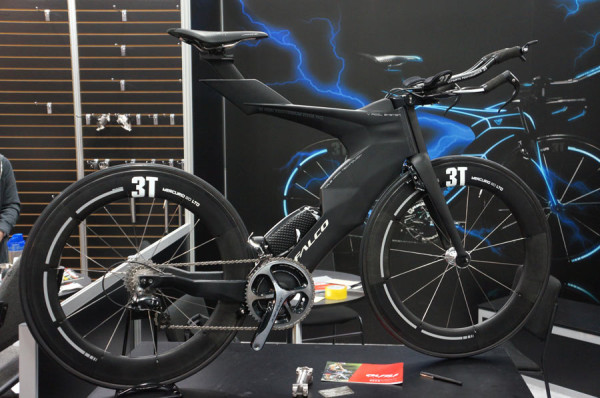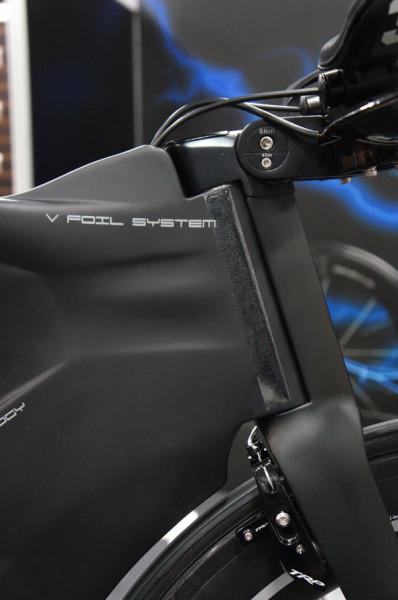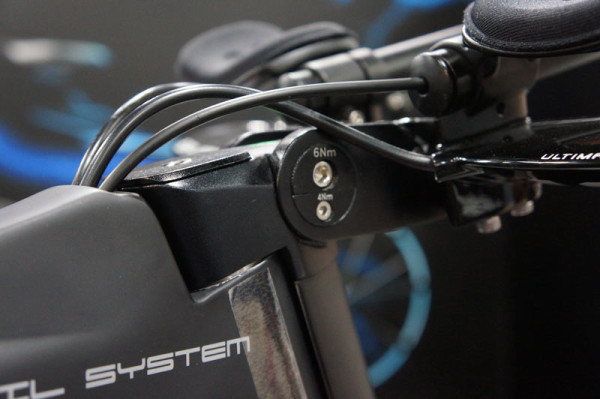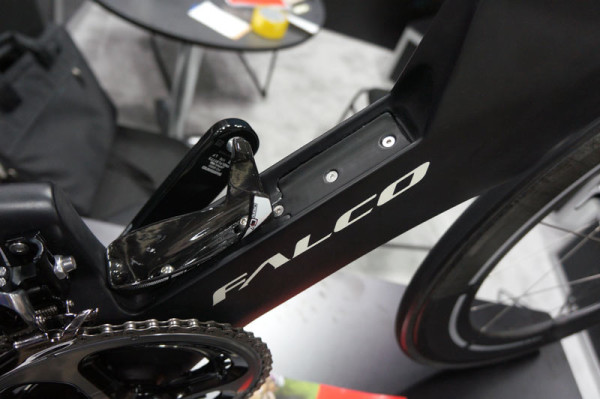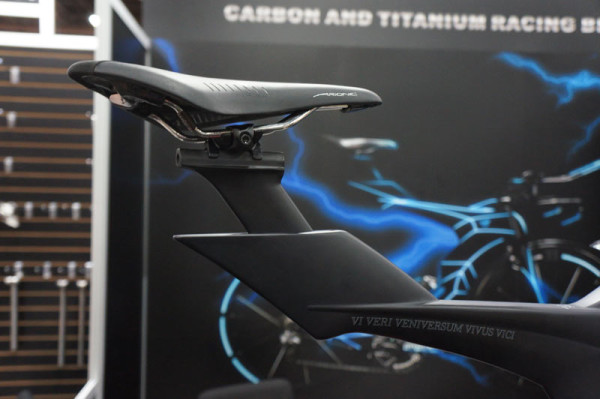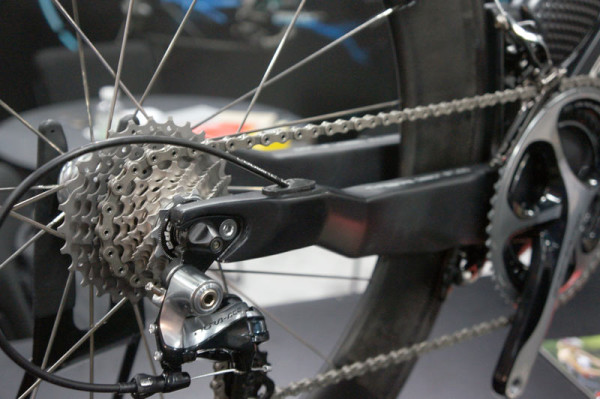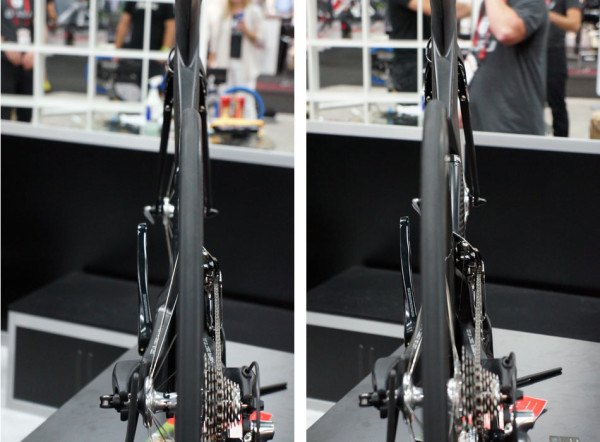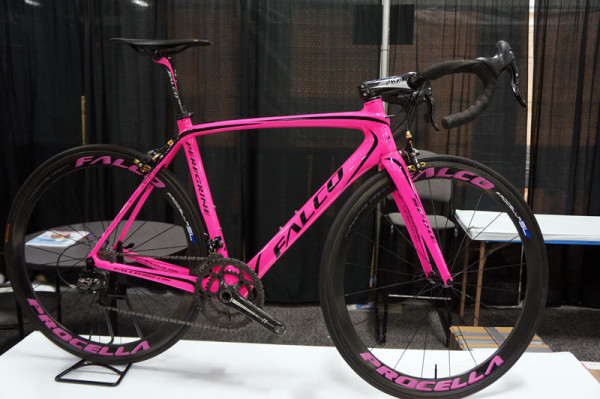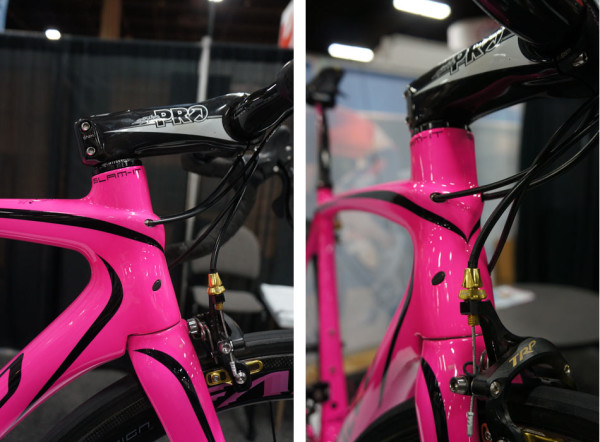Last year, Falco had just launched the V Wing bike with a very Tron-inspired paint scheme. This year, the paint was toned down a bit and the frame refined, but nothing about it was any less sharp.
Using a v-shaped “wing” frame design, it eliminates the seat tube and seatstays to reduce drag. The numbers, weights and pricing are all in that link above, but here’s the basics: 1700g frame, 550g fork, NACA 6-series tube shape profiles and it was designed in conjunction with four different universities and facilities that the military used to design fighter jets. Hence the look.
The adjustable stem means no spacers are necessary to get the height right, which keeps the cables flowing smoothly into the frame regardless of fit. The strip on the head tube is to prevent the external steerer fairing from scratching the frame. One change from the original model is the indented section just behind the protective tape. Last year, the bike had a slight bulge there.
This is one of the cleanest cable routing designs we’ve seen, minimizing their protrusion into the air stream.
The Elite water bottle fits right up to the front derailleur mount, continuing the frame’s shape around the rear wheel. The downtube’s shaping on the driveside supposedly helps direct air around the derailleur.
Remove the bottle and you’ll find the hidden Di2/EPS battery compartment.
The seatmast allows for an effective seat angle ranging from 75º to 82º. Despite appearances, it is height adjustable.
The frame is mechanical or electronic ready and retails for $4,000 with fork, fork, headset, seatpost and stem.
The Peregrine gets a new Hi-Mod “True Kamm” model that is stiffer overall and introduces Kammtail shaping on the seat tube, post and stays. It’s their own version of it, which uses tech developed for the V Wing and is outlined in a white paper (PDF here).
The aero tech might be at the rear, but it’s the delicious looking front that caught our eye. Slam It!
